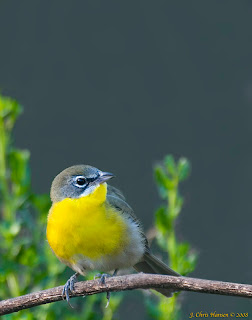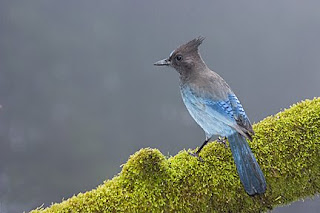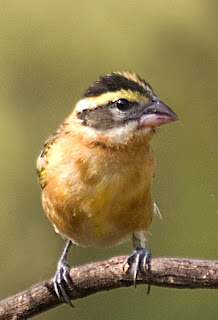










One of the best tools a bird photographer can have in her or his possesion is a pair of pruning shears. For what you may ask? Well for providing perches for the birds you photograph to land on. For those of you that are old hands at backyard bird photography there probably is no need to read on. For those of you new to photographing birds this is one of the best tricks of the trade in photographing birds in your backyard and sometimes in other places too.
So what do you need? Not much really. Just a pair of pruning shears or a limbing saw and access to your own yard or someone elses with permission to cut some twigs, limbs or even whole small dead trees. Just wander around the property and look for plant material that you can cut off that would make a nice perch for the birds you want to photograph. Don't limit yourself to just dead parts of plants either. Look for plants with blosoms, leaves or fruit. Just be sure what you cut off isn't going to damage the plant you are pruning. One other thing to take into account is that some of the smaller birds sometimes don't always photograph well on really large limbs or branches. There are exceptions to this of course for example the banch may be covered in moss or have an incredible wood grain pattern.
So now that you have gathered a bunch of perches what's next? Well a lot depends upon what type of bird feeders you have. You can tape, tie, wire or drill your perch to the feeder. Start with just one perch. (You can use the others later) Just make sure that it sticks out from the feeder in a natural sort of way for the birds to land on. Keep in mind that the whole idea here is to provide a perching place for the birds to use that are coming to your feeder. Some people even place it on a pole a few feet away from the feeder.
Remember that birds don't weigh a lot so you don't have to have a major construction project here.Most birds like to use a feeder that is close to cover they can dive into if they sense a predator. So you need to place your feeders about ten to fifteen feet away from suitable cover such as a hedge or bush. Take care here to place the feeder in a position where you have a good background back behind it. A good back ground should be uniform in color and uncluttered. Often times the same hedge or bush will do.
With regards to feedrs the best kinds are ones that can be moved easily from place to place so that you can change the background or position the feeder for better light. Also check with your local birding store. There are different types of feeders for different birds. In my yard my primary feeder is on a cart so I can move it from place to place. Sometimes it will take the birds a few days to locate its new position however.
The perches you provide don't always have to be small tree parts either. In the past I have used lichen and moss covered rocks and even tree stumps. Another photographer I know that photographs raptors (birds of prey hawks etc.) dug up a large dead tree on a friends property. He had it hauled on a flat bed trailer to a large field where hawks hunt a lot. He then used a backhoe stand the tree back up into a hole to shoot pictures of hawks using the tree as a perch. So be creative.
Once you have your feeder and perch situated find a hidden spot to photograph your birds from. You can shoot from behind the curtains from a window in your house or set up a blind nearby. Whatever the case enjoy taking some shots of your favorite perching birds.
All of the sample pictures were taken using perches that I have placed next to my bird feeders. Most of them were attached to the feeder using wood screws or bailing wire.
God's light and love to all,
Chris
